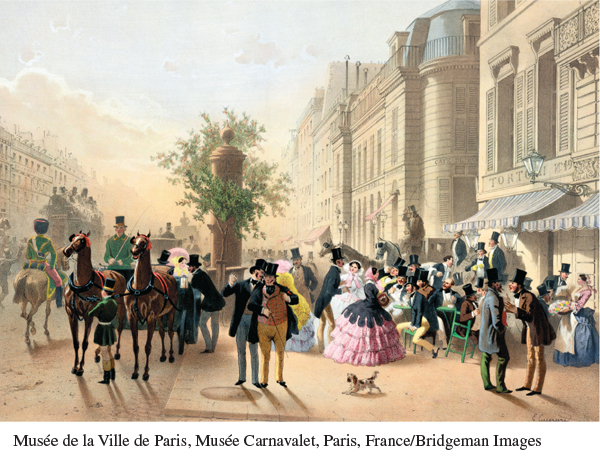A History of Western Society: Printed Page 757
A History of Western Society, Value Edition: Printed Page 724
A History of Western Society, Concise Edition: Printed Page 756
Napoleon III’s Second Empire
Louis Napoleon — now proclaimed Emperor Napoleon III — experienced both success and failure between 1852 and 1870, when he fell from power. In the 1850s his policies led to economic growth. His government promoted the new investment banks and massive railroad construction that were at the heart of the Industrial Revolution on the continent (see Chapter 20). It fostered general economic expansion through an ambitious program of public works, which included rebuilding Paris to improve the urban environment (see Chapter 22). The profits of business owners soared, rising wages of workers outpaced inflation, and unemployment declined greatly.

Initially, Louis Napoleon’s hope that economic progress would reduce social and political tensions was at least partially realized. Until the mid-
At first, political power remained in the hands of the emperor. He alone chose his ministers, who had great freedom of action. At the same time, Louis Napoleon restricted but did not abolish the newly reformed Assembly. Members were elected by universal male suffrage every six years, and Louis Napoleon and his government took these elections very seriously. They tried to entice notable people, even those who had opposed the regime, to stand as government candidates in order to expand the base of support. Moreover, the government used its officials and appointed mayors to spread the word that election of the government’s candidates — and defeat of the opposition — would provide roads, tax rebates, and a thousand other local benefits.
In 1857 and again in 1863, Louis Napoleon’s system worked brilliantly and produced overwhelming electoral victories for government-
Napoleon was always sensitive to the public mood. Public opinion, he once said, always wins the last victory, and he responded to critics with progressive liberalization. He gave the Assembly greater powers and opposition candidates greater freedom, which they used to good advantage. In 1869 the opposition, consisting of republicans, monarchists, and liberals, polled almost 45 percent of the vote.
The next year, a sick and weary Louis Napoleon again granted France a new constitution, which combined a basically parliamentary regime with a hereditary emperor as chief of state. In a final plebiscite on the eve of the disastrous war with Prussia (see “The Franco-Prussian War”), 7.5 million Frenchmen approved the new constitution — only 1.5 million opposed it. Napoleon III’s successful attempt to reconcile a strong central state with universal male suffrage showed that nationalism was compatible with authoritarian government, even as France moved in an increasingly democratic direction.